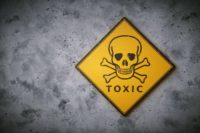
Restrictions on the use of toxic chemicals in the U.S. stand a good chance of being tightened in the coming years, but these changes are not likely to come from EPA’s Toxic Substances Control Act (TSCA) or OSHA. TSCA has only partially banned five chemicals since it came into existence in 1976, and most OSHA Permissible Exposure Limits (PELs) are based on 1968 Threshold Limit Values® (TLVs®).
EHS pros will have to be more attentive as chemical restriction activities escalate. Key initiatives will be developing locally, nationally and globally, making it imperative to keep an up-to-date restricted chemical policy for your workplace.
Driving forces
The driving forces pushing escalating restrictions on toxic chemicals include:- Business response to shareholder interests and marketing considerations, including environmental “green” initiatives.
- New local and state laws designed to protect public health.
- A public that is becoming more concerned about toxic chemicals.
- Pressure from EU legislation, e.g. REACH and RoHs.
- Scientific advancements that detect chemicals at very low concentrations (particularly synthetic/industrial chemicals being found in the human body).
- More Democrats holding elected offices. (Democrats generally favor greater restrictions on toxic chemicals).
Shareholder value
If you “follow the money,” you’ll have a good idea of where things are headed. For instance, in 2007, Wal-Mart established a “preferred chemicals policy” based on a precautionary approach to toxic chemical management. In brief, if a supplier’s product contains a toxic chemical on Wal-Mart’s restricted chemical list, the product won’t be sold in any of Wal-Mart’s 6,600 world-wide stores. This marketing strategy helps Wal-Mart sell more product and forces many other businesses to follow suit by avoiding the use of these chemicals.In April 2008, the Investor Environmental Health Network (with $44 billion under management) reported a significant change in shareholder activity in toxic chemical management at publicly traded companies. A key finding was that shareholder-driven proxies to encourage greater toxic chemical management doubled, and shareholder resolutions on the same issue nearly tripled in 2007.
The rationale for these actions is explained, in part, in the March 2007, Fiduciary Guide to Toxic Chemical Risk. Copies of this report, a must-read for executive level EHS pros, may be downloaded from www.iehn.org. I particularly encourage EHS pros to review the questions posed in the sections, “Assessment of Trustee Awareness of Chemical Risk Issues” and “Explore the Issues with Your Investment Consultants and Managers.” If you understand and appreciate these questions, you understand the business side of this issue.
New local & state laws
In April 2008, Maine passed a new law (LD 2048) to control toxic chemicals in children’s products. What is significant about the new law is that it had overwhelming support from the legislature, passing 35-0 in the Senate and 129-9 in the House. A reading of this new law, the basis of which is under consideration by more than half the states for legislation this year (Washington, Massachusetts and California already enacted similar laws), seeks to restrict certain toxic chemicals from children’s products.Maine’s new law identifies a “chemical of high concern” to be any chemical identified by an authoritative governmental entity on the basis of credible scientific evidence as being known to fit into one of several categories including:
- causing cancer, genetic damage or reproductive harm;
- being persistent, bioaccumulative and toxic; or
- being very persistent and very bioaccumulative.

EU REACH
Maine and other states seem to be emulating the European Union’s Registration, Evaluation, Authorization, and restriction of CHemical substances (REACH), enacted in 2007. For example, under EU REACH, “substances of very high concern” include the categories described in the Maine example; REACH abbreviates these as: CMR, PBT, and vPvB. At the most basic level, REACH considers chemicals unsafe until they are proven safe. To prove that a chemical is safe requires a host of new toxicological studies.REACH is having a huge global impact – if any business wants to import a chemical into the EU, it must comply with REACH standards. When a chemical is found to have special problems, it will be restricted from use in the EU. If a chemical is restricted from use in the EU, its chances of being restricted elsewhere in the world greatly increase.
While this article does not attempt to explain REACH, you should be aware that guidance for downstream users of REACH is now available at the European Chemicals Agency website athttp://echa.europa.eu/reach_en.asp. If you’re primarily an industrial hygienist, I suggest you review the May 2008 REACH guidance addressing “exposure scenario building” as part of the information requirements for a “chemical safety assessment.”
Democratic control
Pundits are predicting that the Democratic Party will most likely win additional congressional seats this coming November and may even win the White House. If this happens, new laws to restrict toxic chemicals are probable. An example of a possible new federal law is the “Kid-Safe Chemicals Act of 2008,” proposed this past May by Democratic Senator Lautenberg, Congresswoman Solis and Congressman Waxman. Highlights of this proposed law include:- restricting the use of dangerous chemicals that have been detected in newborn babies;
- using new scientific evidence to protect health;
- establishing a national program to assess human exposure (workers are included in this category); and
- expanding the public right-to-know on toxic chemicals.




